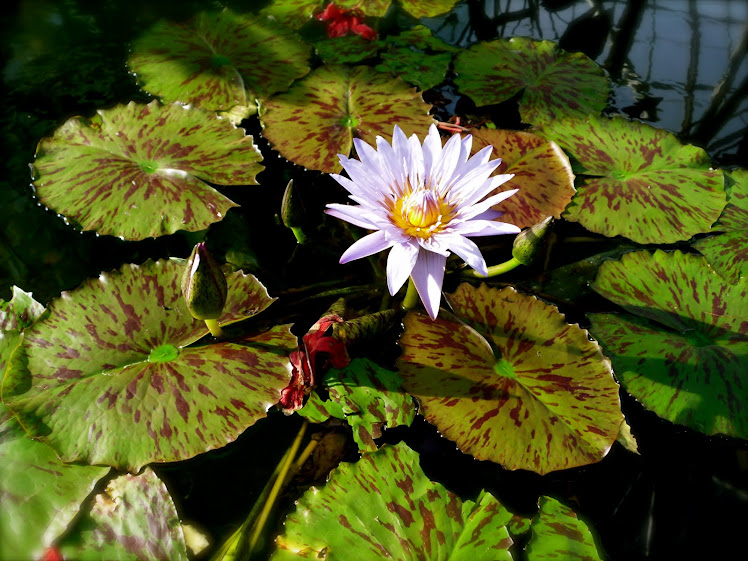This is a paper I wrote recently for one of my final reflections for a feminist theory course. The prompt was to return to a preliminary question about the relationship between theory and praxis, and how our definition of this relationship has evolved over the course of the semester. It's a paper, but it reads like a journal...so... read on you crazy diamond.
TO THE HEALING PLACE
As I revisit the prompt I was met with at the semester’s start and review my own observations on the relationship between theory and praxis, I would not rescind my initial reflections, but I would complicate them. In my primary reflections I glazed over an idea that is central to bell hooks’ argument; that theory can be a healing place. In returning to this relationship of theory and practice, with a semester’s worth of feminist theory in my repertoire, I would like to define how theory has proven, and will continue to be essential, as a healing place in my life both academically and personally.
If the texts I have encountered in this course have taught me anything, it is that feminism is inherently divided and often contradictory. Within postmodern feminism alone, we meet contradictions early and often. As I consider again Charlotte Bunch’s assertion that in order to make theory tangible we must “demystify” it, feminist theories like postmodernism meet this task with increasing difficulty. But just as third wave feminist theory encourages us to allow every person their own opinions about feminism, we as feminist scholars must also find a feminist theory (or theories) with which we can identify and demystify, simply by relating to it.
Understanding and recognizing the feminist theories that resonate with me, and give me rhetoric that is applicable to praxis, has not been immediate or apparent. I have met Adrienne Rich’s “Compulsory Heterosexuality and Lesbian Existence” in two courses prior to this one, but in comprehending radical cultural feminist theory that frames much of Rich’s argument, I was finally brave enough to confront this text. I knew for a long time that the idea of a lesbian continuum was something personally meaningful for me. I didn’t know why, but I felt connected to that text. This semester as I began to hold the reigns on feminist theory, I asked questions of myself that I had previously been lacking the tools to take on, or had been too afraid to ask. The concepts of sexual fluidity and compulsory heterosexuality are no longer inaccessible, and I can ask critical questions not simply of texts and authors, but also of myself. As hooks explains,
"When our lived experiences of theorizing is fundamentally linked to processes of self-recovery, of collective liberation, no gap exists between theory and practice. Indeed, what such experience makes more evident is the bond between the two— that ultimately reciprocal process wherein one enables the other" (28).
This undoubtedly reciprocal process hooks outlines, became my own this semester. As I engage with personal recovery work that is often arduous and painful, I see theory as a powerful tool that is liberatory in a way that I had previously read, but never really understood. Regardless of how my use of language may perpetuate the symbolic order, the language that comes with materializing theory has allowed me to dissect my own experiences and re-read them in a way that is honest and empowering.
Over the course of the semester I have been developing ideas for potential capstone proposals for my Women’s Studies major. After encountering Mary Daly’s scholarship and doing extensive work on my own about the efficacy of acts of reclaiming language, I was extremely interested in making this my capstone focus. But in the last few months, as a personal experience has illuminated and revealed much about my personal understanding of sexual identity, my capstone idea has evolved. My new focus is using Adrienne Rich’s text as a model by which I can recover personal moments in which I have exemplified or resisted compulsory heterosexuality, and how shared this experience may be. I realize of course that an undertaking like this one involves much personal disclosure, but I know that my Women’s Studies courses have prepared me to apply this experience as a catalyst for personal and academic growth.
Underlining the ways in which we can build bridges between theory and praxis can be unique for everyone encountering feminist theory. However, being able to grapple with the language, and use it to diagram your own experience, is an immediate form of praxis, and one of the resounding pieces of evidence that leads us to keep affirming the personal is political. As I continue to unfold the ways in which theory and praxis connect and in many ways begin the task of “naming all our pain,” I meet my own battles not as an individual inept and floundering, but as part of a collective that will not only survive, but endure beautifully, assisting others in my wake.
